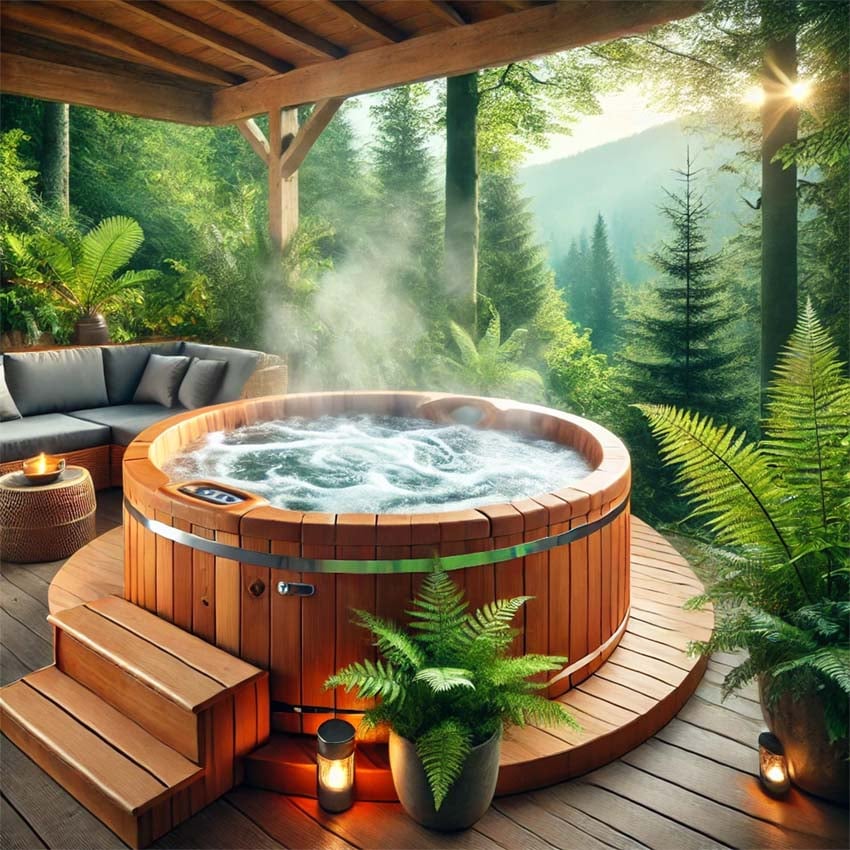Like all woods, Western Red Cedar is hygroscopic and will absorb or discharge moisture to attain equilibrium with the surrounding atmosphere. However, it has a very low shrinkage factor and is superior to all other coniferous woods in its resistance to warping, twisting and checking. The size differential between dry and unseasoned Western Red Cedar is given in Table 2. Shrinkage in both the radial and tangential directions is also given in Table 2.
Thermal Conductivity
Wood is an excellent thermal insulator. This is an important characteristic since good thermal insulators help keep buildings cool in the summer and reduce heating costs in the winter.
The conduction of heat in wood is directly related to its density. Woods with low density have the highest thermal insulating value because such woods contain a high proportion of cell cavities. In dry wood, these cavities are filled with air which is one of the best known thermal insulators.
With its low density and high proportion of air spaces, Western Red Cedar is the best thermal insulator among the commonly available softwood species and is far superior to brick, concrete and steel. It has a coefficient of thermal conductivity (k value) at 12% mc of 0.74 BTU in. per square ft. H degrees F. The R value (the reciprocal of k) for Western Red Cedar is 1.35" of thickness.
Durability
Historically, native peoples of the Pacific coast prized cedar for its long-lasting qualities and used wood and bark from cedar trees for most of their building needs. Evidence of cedar's durability are the many cedar artifacts still in good condition today.
Properly finished and maintained, cedar will deliver decades of trouble-free service. If exposed for prolonged periods to conditions where decay could be a factor, such as where the wood is in contact with the ground, cedar should be treated with suitable wood preservatives.
Finishing
Although cedar is a naturally durable species, leaving it untreated is not recommended because a finish or protective coating will greatly increase its service life. Cedar is free of pitch and with its high degree of dimensional stability, it is the best of the softwoods for accepting paints, stains, oils and other coatings. For a detailed discussion, see Finishing Western Red Cedar published by the Western Red Cedar Lumber Association
Products, Grades and Sizes
There are few more versatile building materials than Western Red Cedar which is ideal both for indoor and outdoor uses. Western Red Cedar lumber is available in visual stress grades for construction and finishing uses in a range of lengths, widths and thicknesses. It is available in clear or knotty grades with smooth surfaced, combed or rough sawn finishes; kiln dried or unseasoned (green); flat grain and vertical grain.
Western Red Cedar (Thuja plicata) is one of North America's great renewable resources. Slow growing and naturally durable, Western Red Cedar has one of the longest life spans of any North American softwood. It produces long lengths of timber with true, straight grain. It is free from pitch and its heartwood has natural decay resistance. Its low density gives it an insulation value superior to most other species. Light weight, easy to work, easy to finish, possessing outstanding dimensional stability, Western Red Cedar is a preferred wood for nearly all purposes where attractive appearance or resistance to weather is important.










